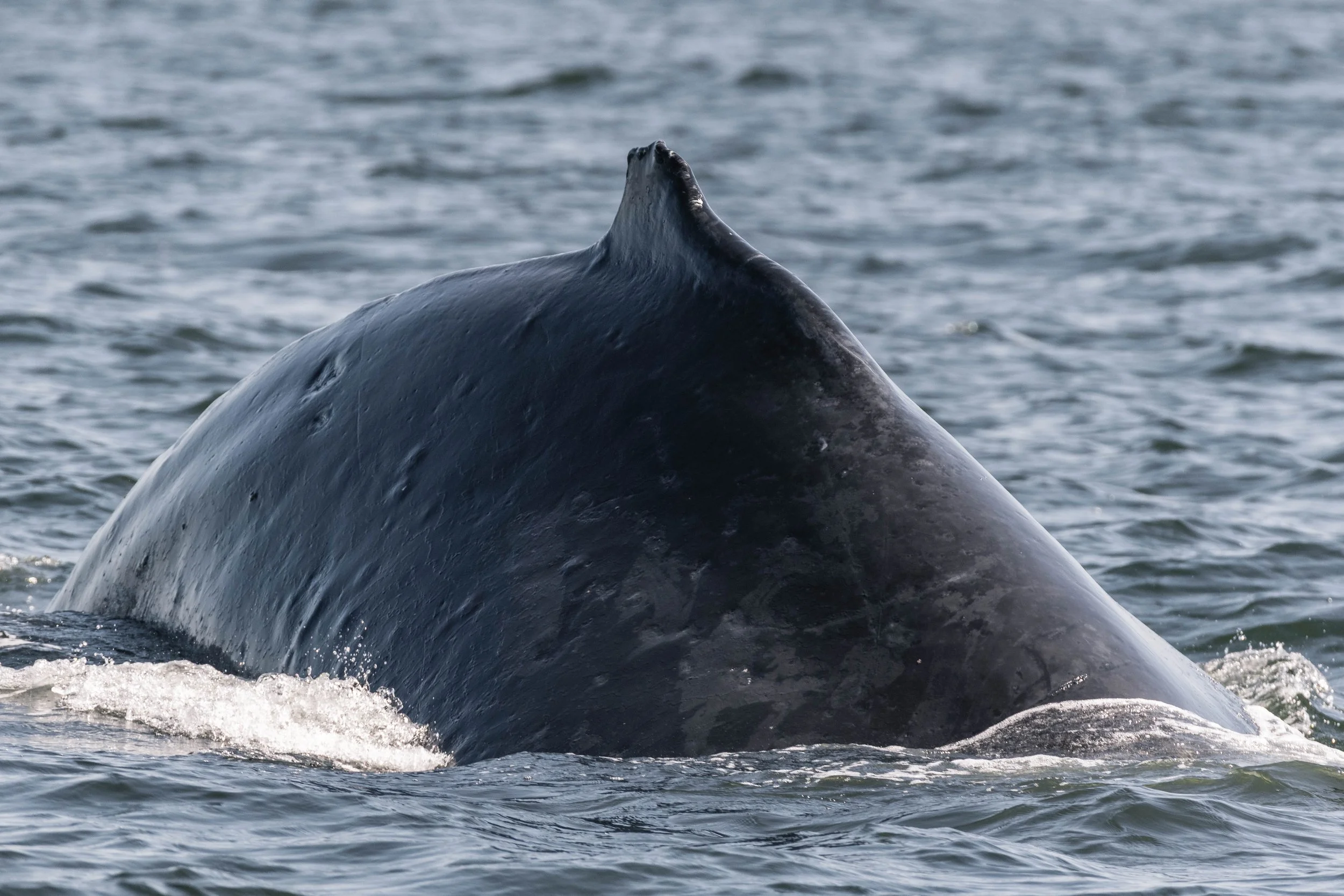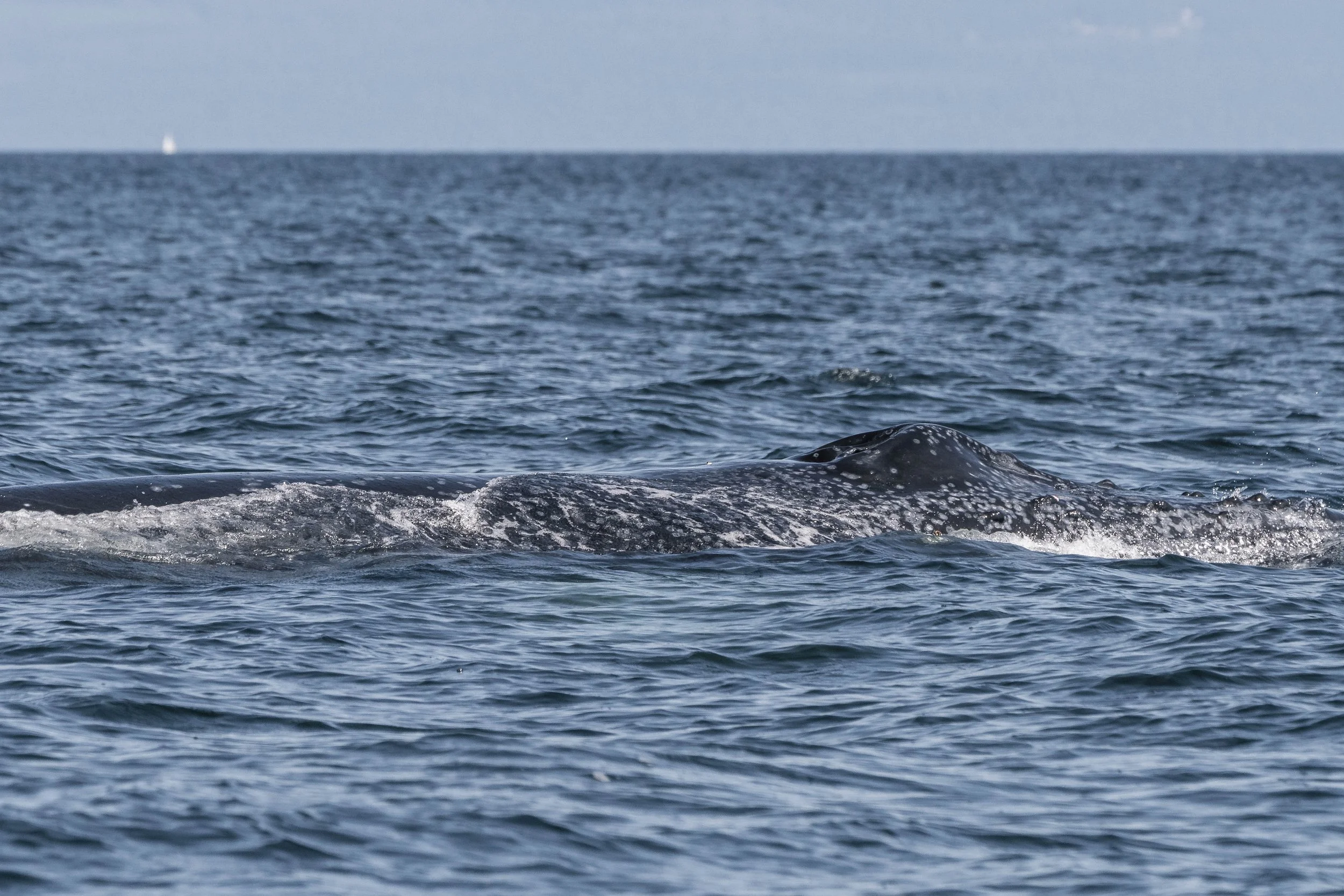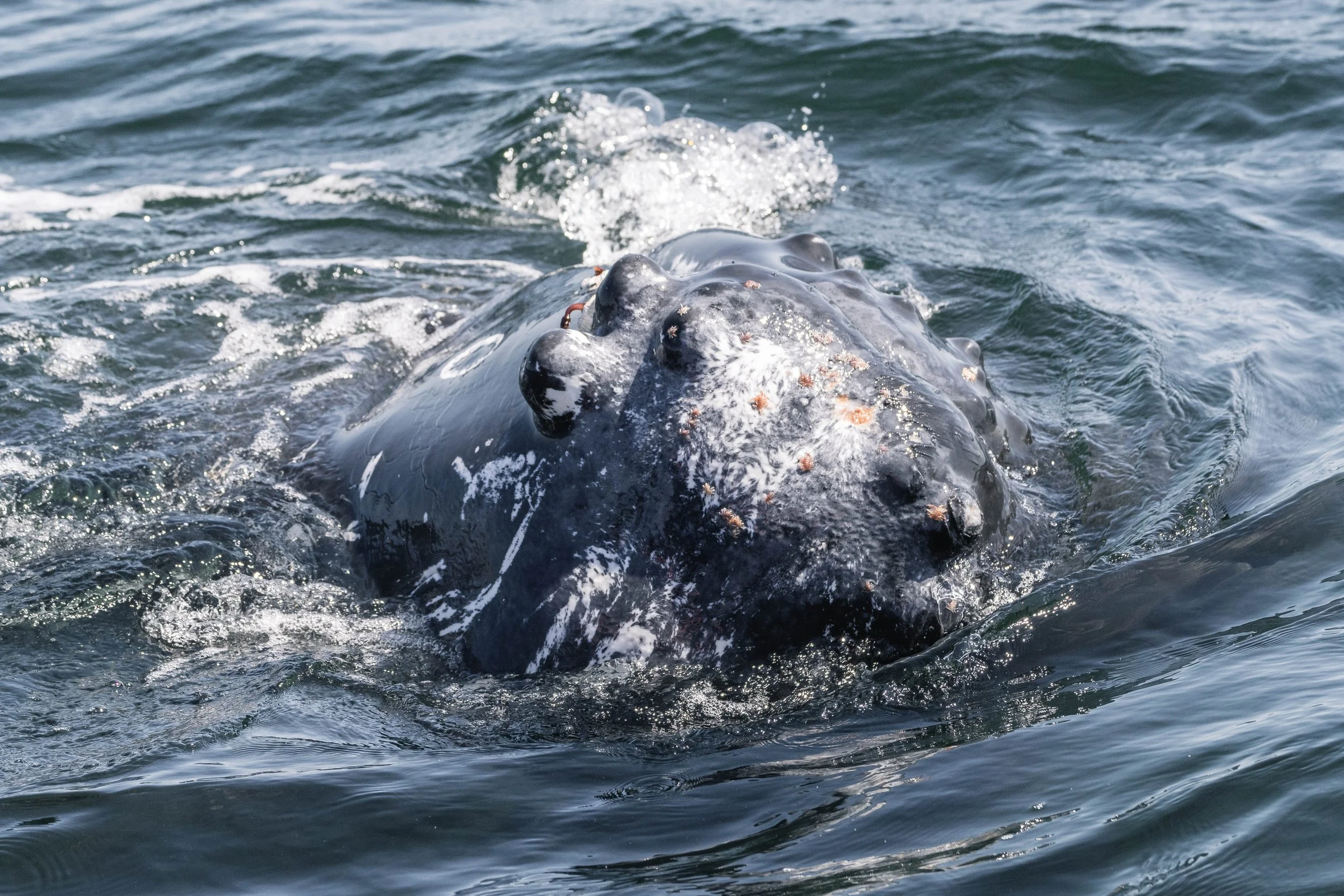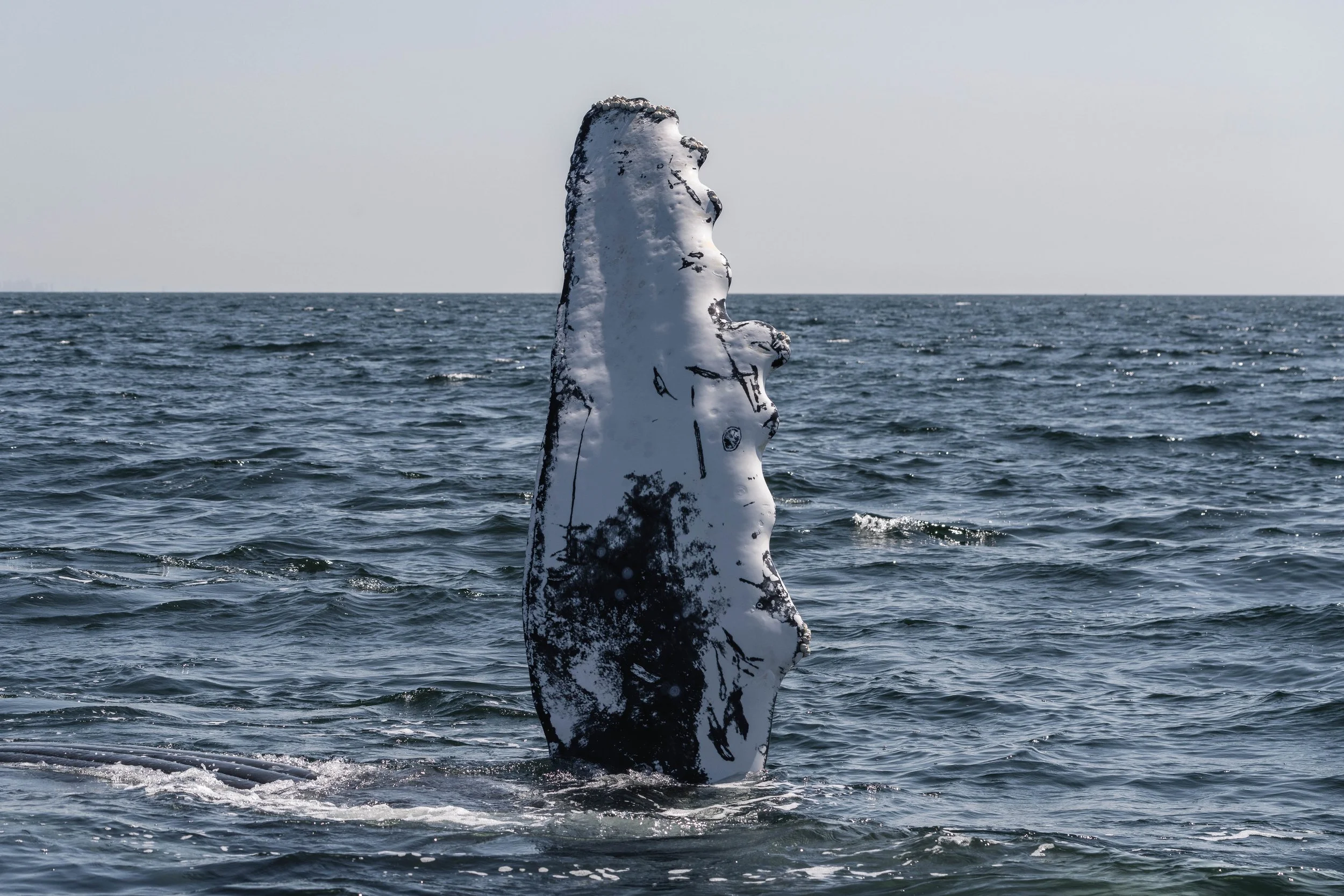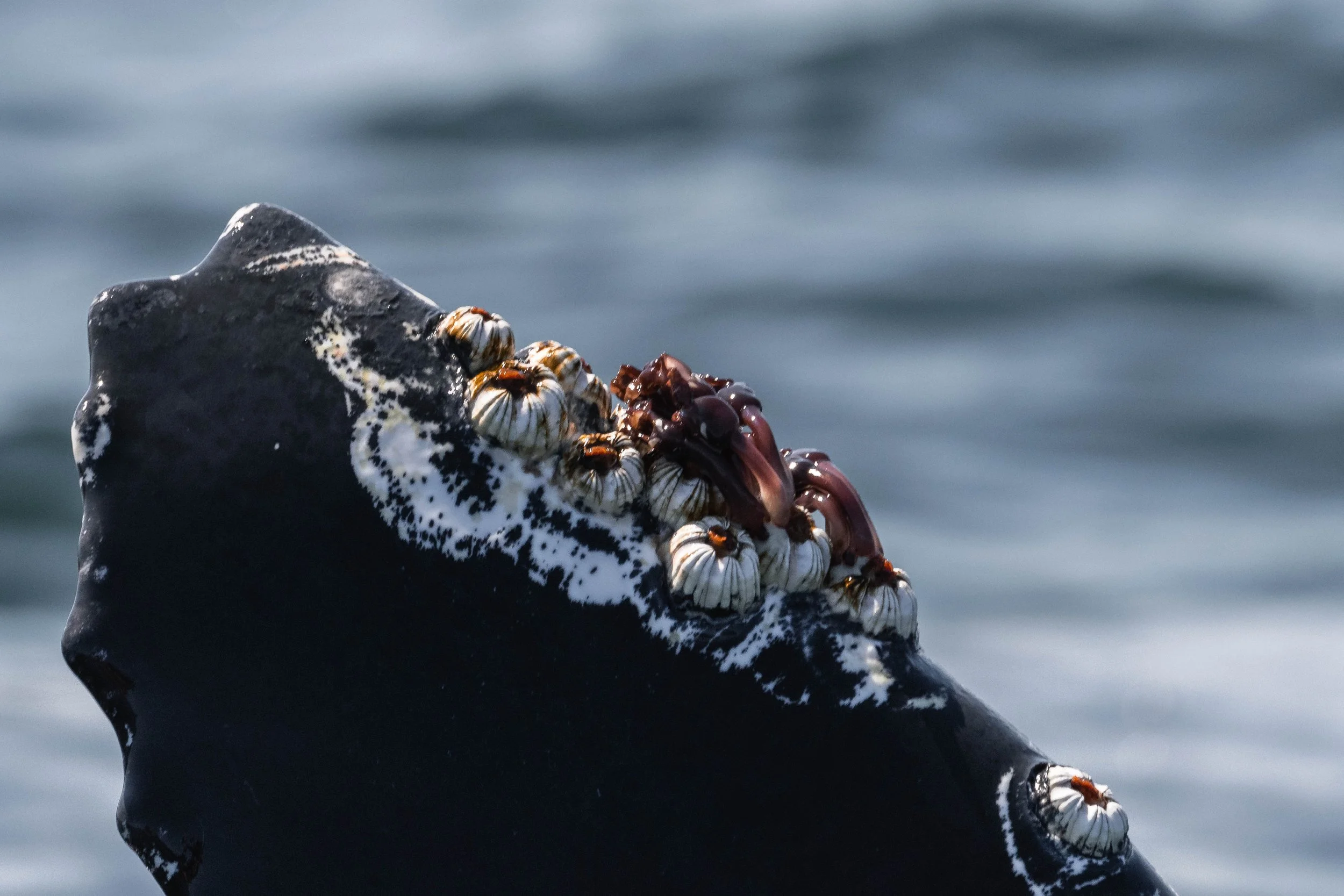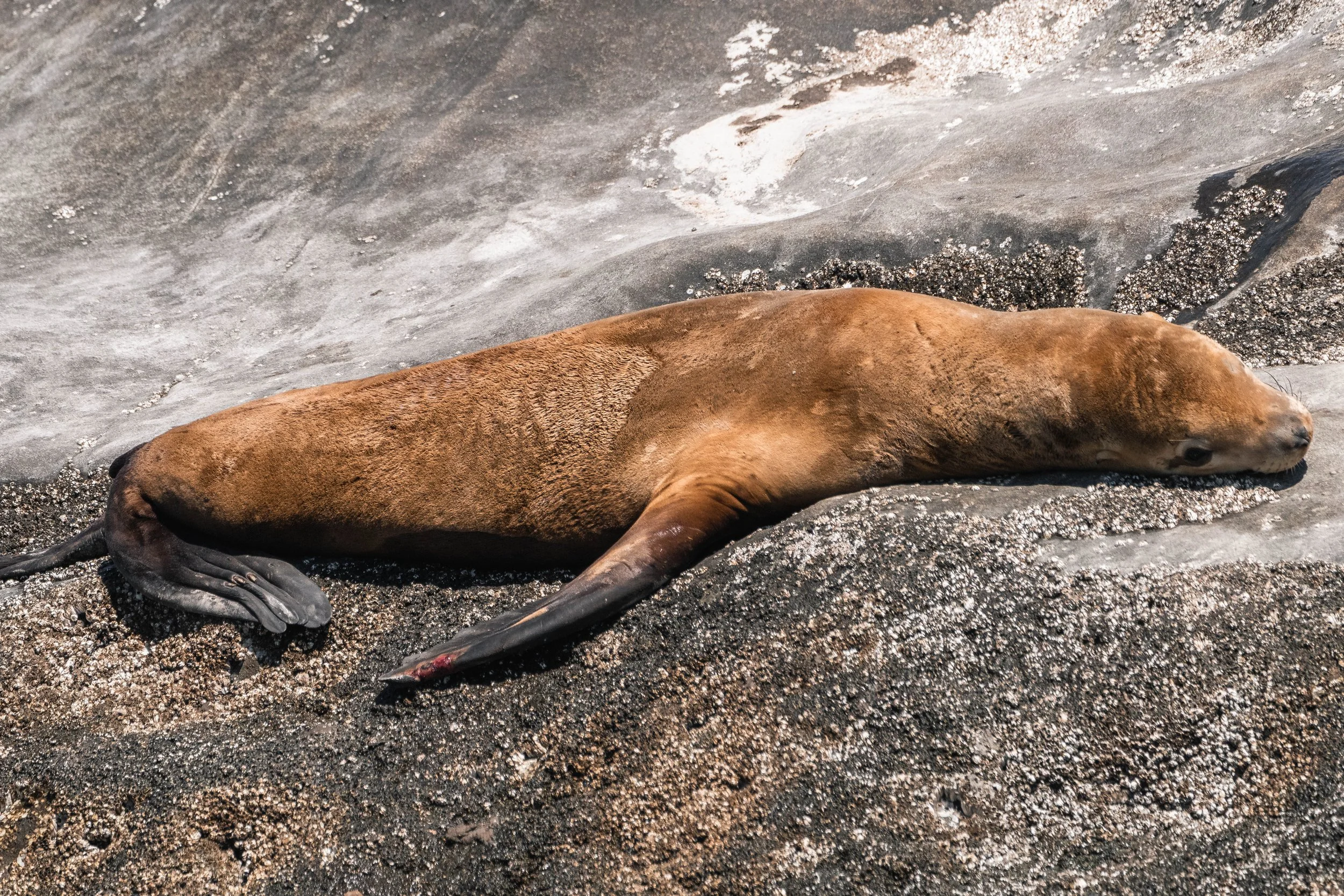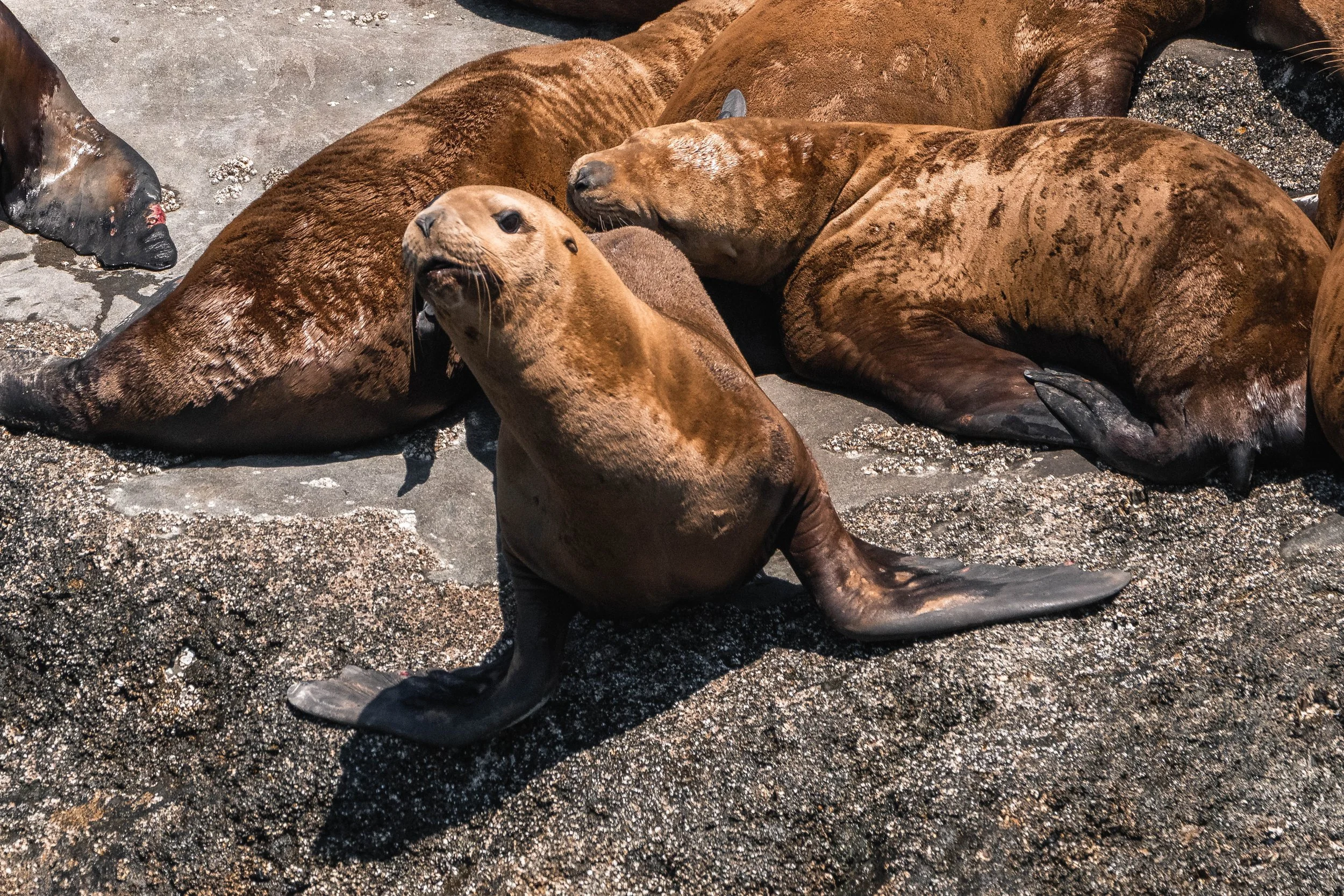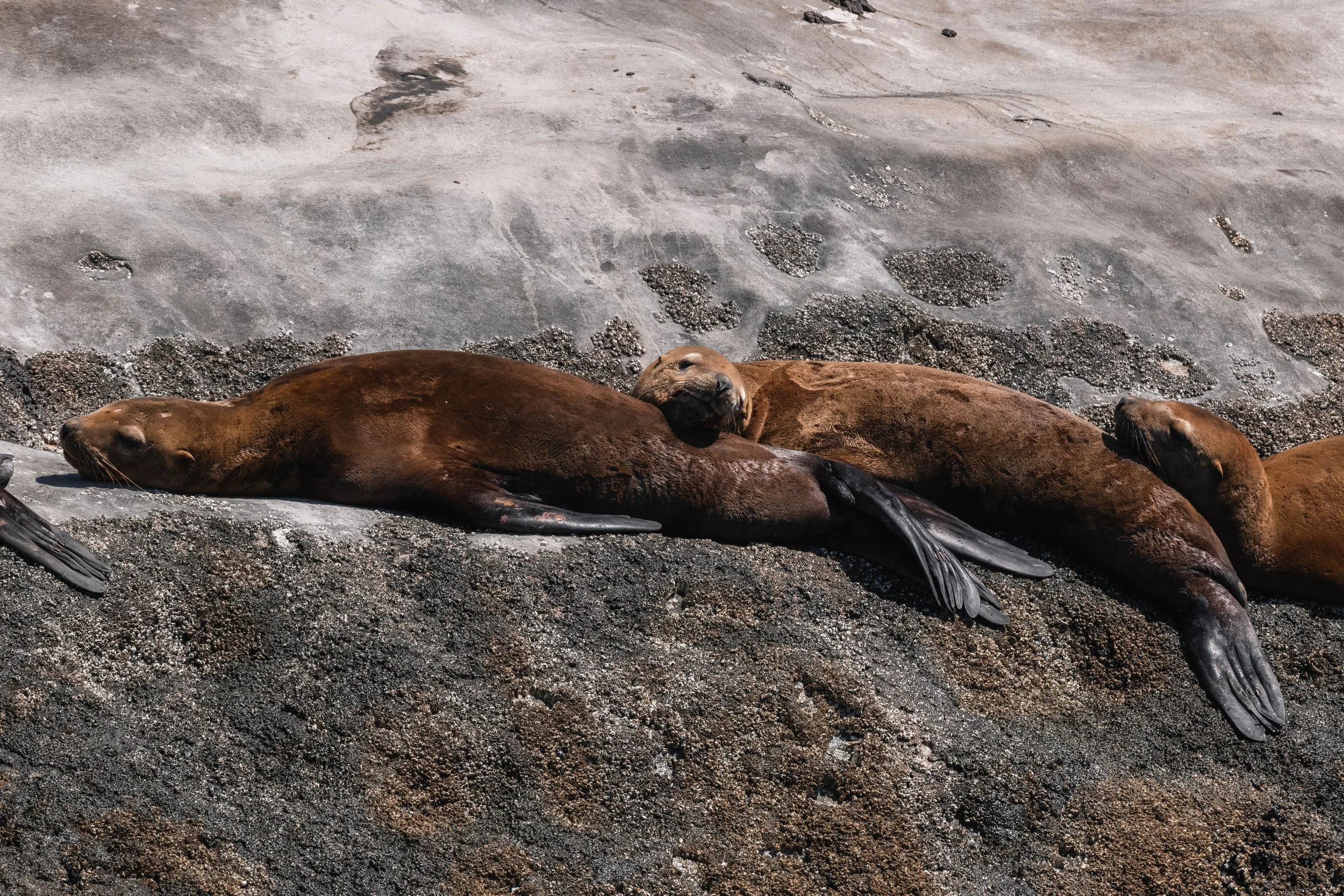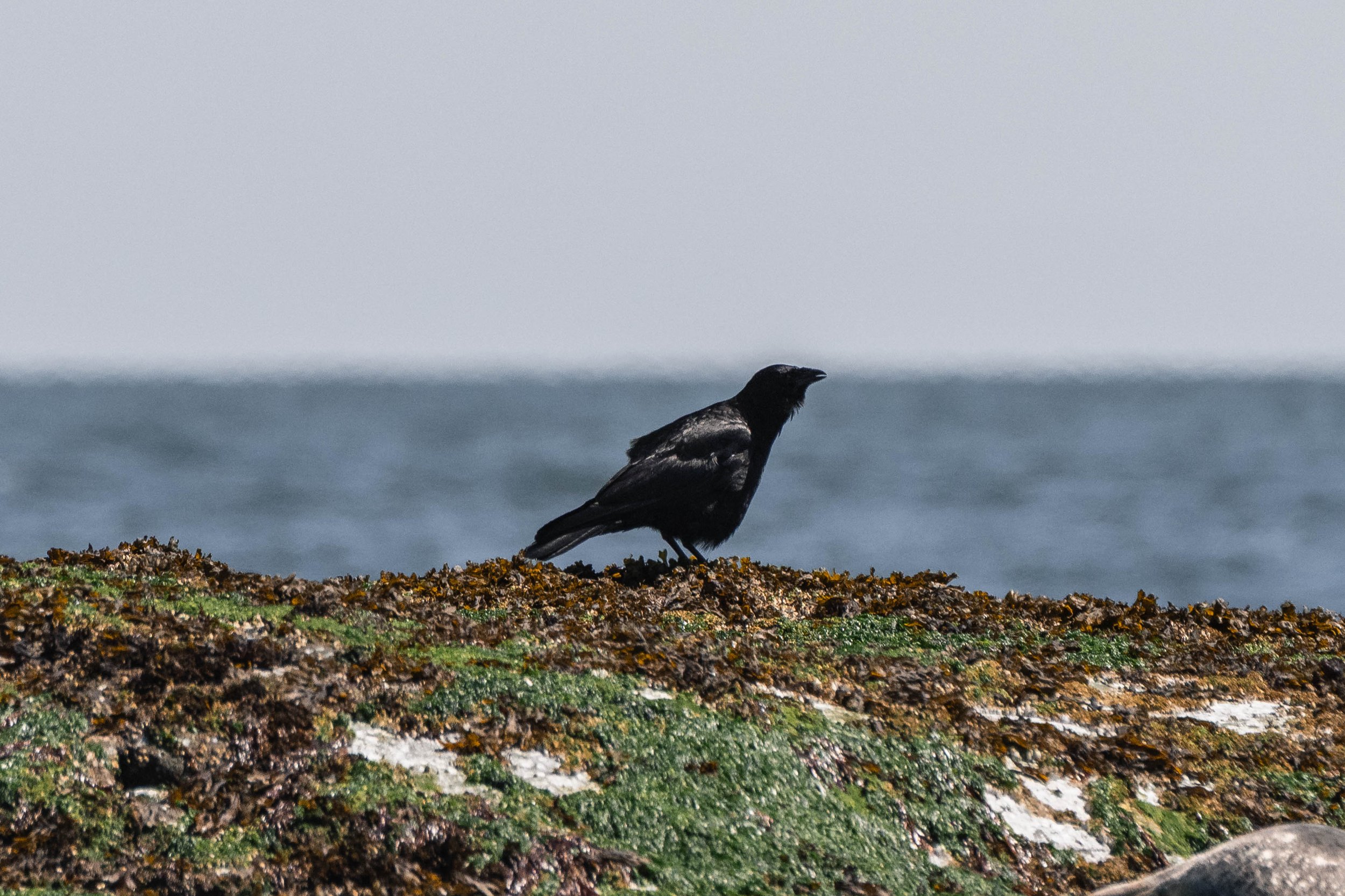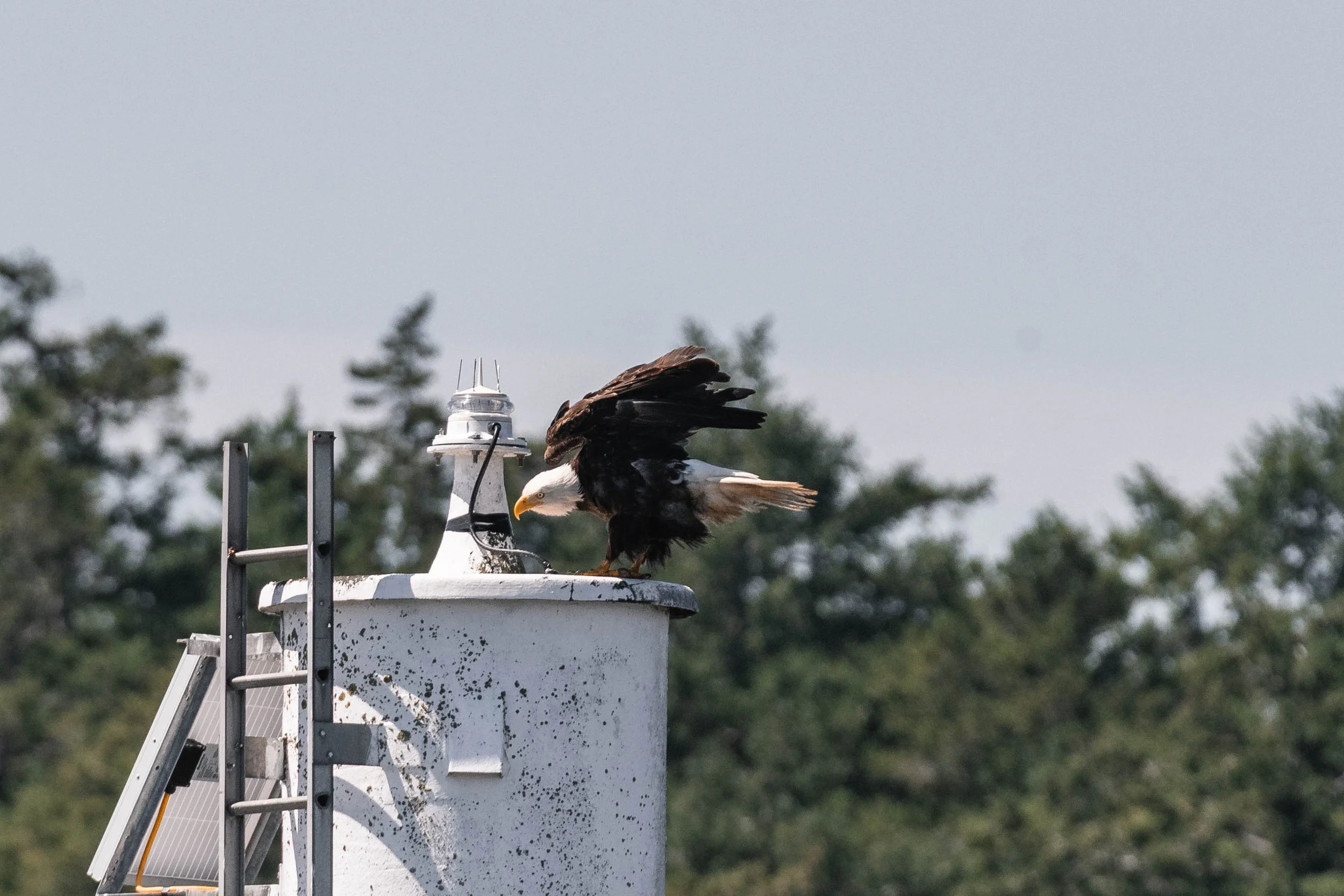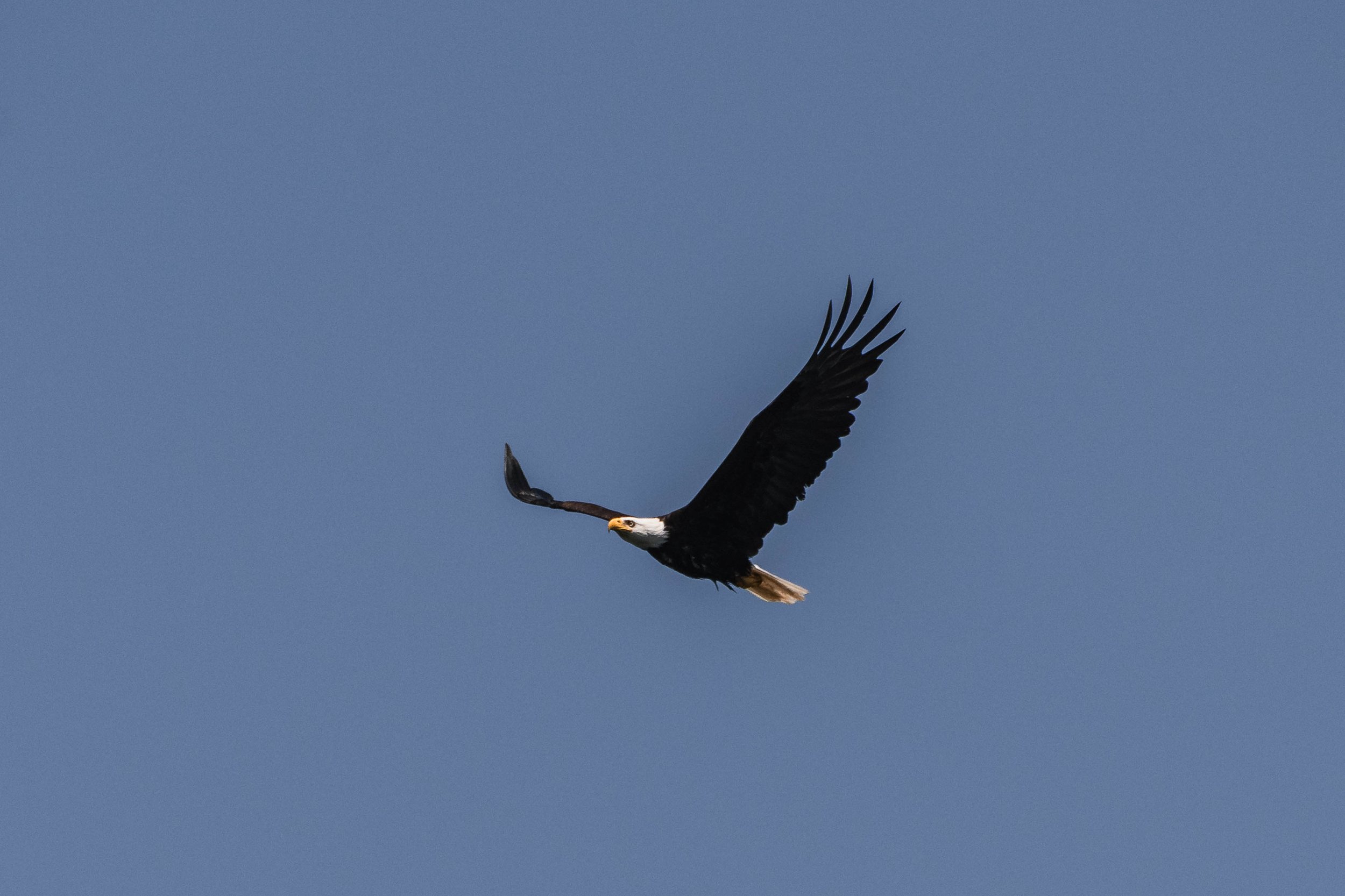July 28, 2025, 10:30 AM - Humpbacks, humpbacks, everywhere!
Our seas have been alive with marine life recently, and with conditions looking promising this morning, our team was eager to get out on the water and see who was cruising through the Strait of Georgia today!
To give ourselves the best chance of spotting whales, our fleet spreads out in a typical search formation, a strategy that allows each vessel to cover a unique area of the Salish Sea. Today it paid off beautifully! In an exciting and somewhat serendipitous twist, all three of our vessels found their own groups of humpbacks, and nearly at the same time!
Our semi-covered vessel, Kula, was the first to radio in with a sighting. Just off the scenic Flattop Islands beside Gabriola, guests on board were treated to the company of a stunning trio: Malachite (BCY1463), Specter (KEY0057), and Velvet (BCY1186)all surfacing in calm, glistening waters with their signature bushy blows hanging in the air. Moments later, Cascadia, our open vessel, called in their own find, another trio: Vanta (BCX1730), Bullet (BCX1658) and a yet-to-be-identified companion. Meanwhile, further east, Keta located a more intimate pair: the unmistakable Holey Moley (BCY1220) alongside BCZ0410 calf 2022 now growing into their independence.
It’s not just good luck that brings so many humpbacks into the Strait of Georgia at this time of year, it’s food! These waters are a rich, seasonal buffet, and the whales are here with a purpose.
Humpback whales undertake a long migration each year. In the winter months, they breed and give birth in warm, tropical waters, typically off the coasts of Hawaii, Mexico, and Central America. But those waters don’t offer much to eat. So come spring, the whales begin the long journey north to cold, nutrient-rich feeding grounds. And the Strait of Georgia, along with the rest of the Salish Sea, is one of their favourite stops.
Our coastal waters are loaded with biological productivity thanks to a combination of tidal currents, sunlight, and upwelling. These forces work together to fuel massive blooms of plankton, which in turn feed small schooling fish like herring, sand lance, and krill, exactly what humpbacks are looking for. When you see a humpback lunging through the water, you're watching a highly skilled predator at work. This is no casual feeding, it’s fuel for their next migration and a chance to store energy for the winter fast to come.
Seeing three different groups of humpbacks in a single outing is always a special experience. It's not only a sign that the whales are thriving here, it's also a glimpse into the fascinating way they use these waters. Whether they’re travelling solo, in temporary associations, or teaching a calf the ropes, each surfacing blow and fluke tells a story of resilience, recovery, and the rhythm of the ocean.
In addition to the bustling trios and duos scattered across the Strait of Georgia today, two more encounters rounded out what felt like a full-on humpback parade. Our crew also spotted Crater/Mensa (BCX1565) travelling alongside an unknown companion, while Smoke (BCX2183), a well-known humpback, was a solo traveller, sighted not far off, moving through the waves.
Unlike some of the more social groups we encountered earlier in the day, this trio didn’t appear to be actively feeding. Instead, these whales were surfacing in consistent intervals, maintaining a steady course, and covering distance, a good indication that they were likely in transit.
But that doesn’t mean they weren’t thinking about food.
Humpbacks in the Strait of Georgia are almost always here for one reason: to feed. When we see them on the move like this, it’s often because they’re relocating from one productive feeding patch to another. These whales may have exhausted the bait ball in one area and are now heading off to the next buffet table. Much like us shifting from appetizers to mains, they’re just pacing themselves, following the fish and krill as they move with currents and tides.
It’s also worth noting that while humpbacks are often seen lunge-feeding dramatically at the surface, they can just as easily be scooping up prey well below the waves, where we can’t see it. So even when they appear to be “just travelling,” they could be feeding on the go, especially if small prey is scattered in the water column.
Watching whales travel through the Strait reminds us just how dynamic this ecosystem is. Whether they're feeding, resting, or relocating, these whales are constantly adapting to the changing conditions of their environment, and giving us a front-row seat to an ocean full of life.
With so many of our regular fluked friends back in the Salish Sea this season, we can’t wait to see what the rest of the summer holds!
We also had the chance to visit a lively haulout where harbour seals and Steller Sea Lions were soaking up the summer sun, and keeping a close eye on the water. These coastal pinnipeds are skilled hunters, feeding on the same small schooling fish as the humpbacks, like herring and anchovy. It's not uncommon to see them diving and feeding in the same areas as whales, all taking advantage of the seasonal abundance. Sometimes, you'll spot a sea lion surfacing right next to a lunge-feeding humpback, another reminder that in the rich waters of the Salish Sea, there’s enough to go around!
Please enjoy these photos by Marine Naturalists Aly Kohlman, Val Watson, and Desarae Poier.
Bullet’s fluke. Photo by Aly Kohlman.
Vanta fluking from a bit of a funny angle. Photo by Aly Kohlman.
Bullet beginning to dive. Photo by Aly Kohlman.
Nostrils and some tubercles! Photo by Aly Kohlman.
Malachite beginning to dive. Photo by Des Poier.
Malachite’s fluke. Photo by Des Poier.
BCZ0410 calf 2022’s dorsal. Photo by Val Watson.
BCZ0410 calf 2022 diving. Photo by Val Watson.
BCZ0410 calf 2022 has a majorly spotty back! Photo by Val Watson.
BCZ0410 calf 2022 going for a dive. Photo by Val Watson.
Look at all those old barnacle scars! Photo by Val Watson.
Whale lice - cute but a bit gross! Photo by Val Watson.
BCZ0410 calf 2022 (back) and Holey Moley (front). Photo by Val Watson.
A lice-y little face! Photo by Val Watson.
A big pec fin waving in the air. Photo by Val Watson.
The amazing life of a barnacle! Photo by Val Watson.
Frolicking in the kelp! Photo by Val Watson.
Now THAT is a round seal! Photo by Val Watson.
So fuzzy, young, and round! Photo by Val Watson.
A Steller Sea Lion on the rocks. Photo by Val Watson.
Moving down the rocks and eyeing us up. Photo by Val Watson.
Using eachother as a pillow! Photo by Aly Kohlman.
Snoozing in the sunshine. Photo by Val Watson.
A Raven calling from the top of the rocks. Photo by Val Watson.
A Belted Kingfisher roosting in the trees. Photo by Val Watson.
A Bald Eagle landing on a marker. Photo by Aly Kohlman.
A Bald Eagle soaring by. Photo by Val Watson.
A projectile poop from a Double-Crested Cormorant! Photo by Aly Kohlman.
A Harbour Air Seaplane soaring overhead. Photo by Val Watson.
Our semi-covered vessel Kula cruising by. Photo by Val Watson.



